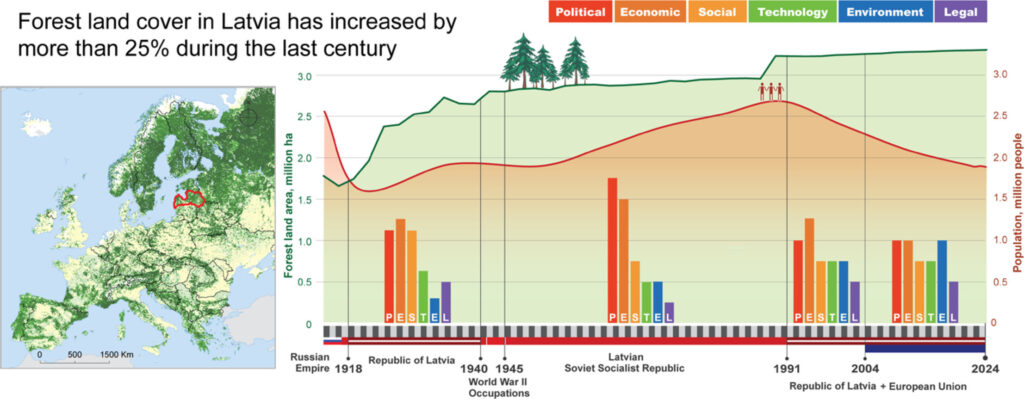Latvia’s forests tell a story of resilience, transformation, and adaptation to political, social, and environmental upheaval. A new study, Drivers of Forest Land, Management, and Policy Changes in Latvia: Over a Century of Transitions, published in Trees, Forests and People, explores how shifting political regimes and governance have shaped one of Europe’s most forest-rich nations.
Using the PESTEL analytical framework, examining Political, Economic, Social, Technological, Environmental, and Legal factors, the authors trace six key historical periods, from the Russian Empire and early independence to Soviet occupation, the post-1991 transition, and eventual European Union membership.
Their results? Political and economic drivers have consistently dominated forest management decisions, with their influence shifting alongside Latvia’s governance systems.
Under Soviet and wartime occupations, Latvia’s forests suffered exploitation and ecological degradation. Since regaining independence and joining the EU in 2004, the country has made significant movement towards sustainable forest governance. Democratic institutions, modern technology, and EU environmental policies have promoted transparency, reforestation, and biodiversity protection.
Today, forests cover more than half of Latvia’s territory, playing a crucial role in the country’s economy and within the European Green Deal framework. The research highlights that while climate change is assumed to be the dominant factor influencing bio resources, political and institutional decisions must also be factored in as decisive forces.
The Latvian case underscores a broader European lesson: supporting adaptive and sustainable development requires a recognition of all drivers, environmental and otherwise.
To read the full article: https://doi.org/10.1016/j.tfp.2025.101015

